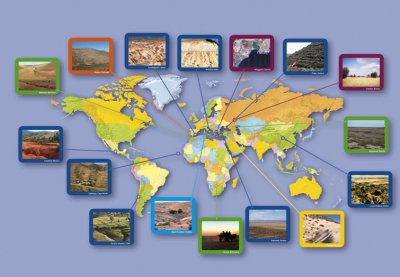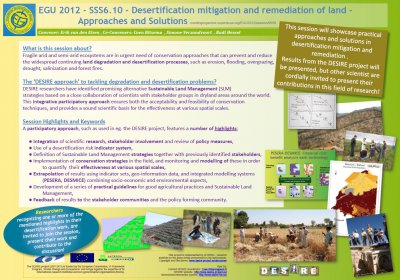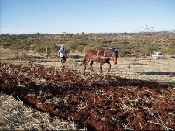|
This part of the Harmonised Information System contains all the key messages that have been concluded from the DESIRE research programme and study sites. The messages have been designed to be of interest at a number of spatial and organisational levels. Some of these messages have been circulated as news items, - as press releases, newsletters, podcasts and webcasts; and others are in booklets, , factsheeleafletsts, policy briefs, or presentations.
 |
»DESIRE video clip
A video clip showing examples of the problems of desertification in various areas around the world and some of the local solutions that the DESIRE project has developed to alleviate them.
|
 |
»Global level
White papers, briefs and other documents containing research results from DESIRE on the causes, consequences and management of desertification and land degradation that are part of the European Union's commitment to support the United Nations Convention to Combat Desertification.
|
 |
»National level
Policy briefs demonstrating that research results from DESIRE are particularly relevant to the efforts, planning and policies of countries in which the study sites are located to combat, mitigate and ameliorate the effects of desertification and land degradation.
|
 |
»Booklets and fact sheets
A series of booklets (info-briefs) and shorter fact sheets demonstrating how DESIRE research is helping to mitigate different aspects of the problems of desertification and land degradation. Written in non-scientific language, the booklets are of interest to a wide range of stakeholder audiences, from policy makers to school children.
|
 |
»Sharing the science
The science behind the the sustainable land management approaches and technologies recommended to dryland stakeholders around the world is shared with other researchers in scientific papers and at conferences. A major conference is that of the European Geosciences Union, held annually in Vienna. See some of the DESIRE posters and presentations presented in April 2012.
|
 |
»Promoting gender equality
Posters from each study site describing how new land use management gives additional time and other possibilities for women and men.
|
|



 Key messages
Key messages




